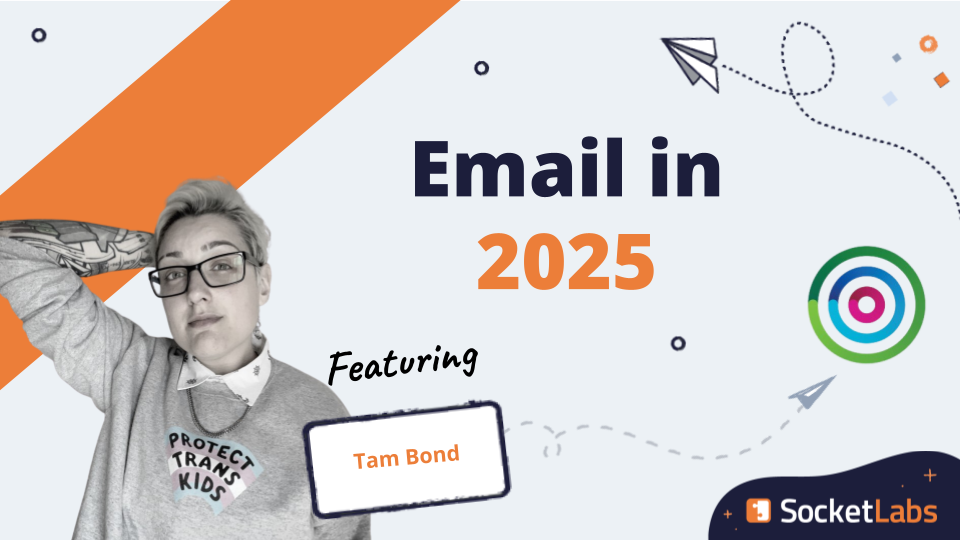Please welcome Tam Bond!
Tam Bond (she/they) is Dotdigital’s Head of Messaging Operations with over a decade of experience in email and SMS delivery and deliverability. They passionately evangelize a holistic and data driven approach, and champion cross-discipline collaboration both within her team of engineering and deliverability specialists and over the wider messaging ecosystem.
Tam is a fixture in the email community and they always bring a fresh perspective to the mix. With their deep background in omnichannel experiences and how these could look in both the near- and long-term futures, we asked them to set their sights on email in 2025. Tam’s answer for question three is intriguing! Take a look for yourself:
How do you see email fitting into the marketing mix in 2025?
Less, but also more.
Overall, I expect email volume will increase as more and smaller brands create or add more to their online presence; but for each brand’s individual mail streams I expect the volume to be less as they tailor customer journeys to meet expectations.
Email has never been the best mechanism for time-sensitive communication, and I expect to see more use of other channels such as push notifications and SMS/MMS messages for things like flash sales and shipping notifications.
With more enhanced targeting and personalization, tech such as schema which allows for more website-like experiences in emails, and better cross-channel utilization to really meet consumers on the platform they’re at, I think brands are going to send less email while still achieving or even exceeding their revenue goals.
What about email do you see as a nice-to-have for now, but feel will be considered table stakes by 2025?
Integrated and secured data across all platforms.
It’s pretty clear the US is headed for its own version of the GDPRpocalypse seen in the UK and Europe a few years back, and US businesses need to start prepping for stricter data legislation now. I saw way too many companies scrambling at the last minute, sending ill-advised privacy policy update emails and spending a lot of money on last minute contractors to be prepped in time for GDPR. US senders need to start getting ahead of this now.
While the FTC and lawyers on K Street in DC are skeptical of federal privacy legislation passing, at the state level the ball is already rolling. Currently, eight states either have legislation or are due to have legislation in place in by 2026 and the topic is pretty heavily bipartisan. Subject data access requests, the right to be deleted/forgotten, data portability, and tough laws that give consumers the right to opt out of the sale or sharing of their data for behavioral targeting (i.e. targeted advertising) through universal opt-out mechanisms — all of this is a major technical challenge requiring businesses to connect the data dots across all their ESPs, CRMs, CXDPs, etc.
Learn the lessons from the UK and EU: start talking to your lawyers/DPO now, start the devs on projects to ensure your data is integrated across platforms, and start implementing not just what’s legal but what’s best practice when it comes to consent, the data you collect and how you store that data.
What do you hope or wish to see change within email by 2025?
I’d love to see marketers finally treat email as a two-way conversation. Death to email blasts!
I think AI has an important part to play in helping marketers treat email as a conversation. Especially for large volume senders, it’s expensive to have a human team opening, processing and responding to every reply, but using AI could help here. Having an AI assistant analyzing the contents of each reply and then doing everything from simply flagging or aggregating negative replies (a great direct indicator from recipients that you’re not meeting their expectations) to raising requests in your support ticketing platform to creating a tailored reply to help and delight responders — that’s a game changer.
As mailbox providers continue to lower the veil, further obfuscating traditional metrics of engagement, marketers need to better utilize direct information from subscribers, and AI may help take some of the load.








